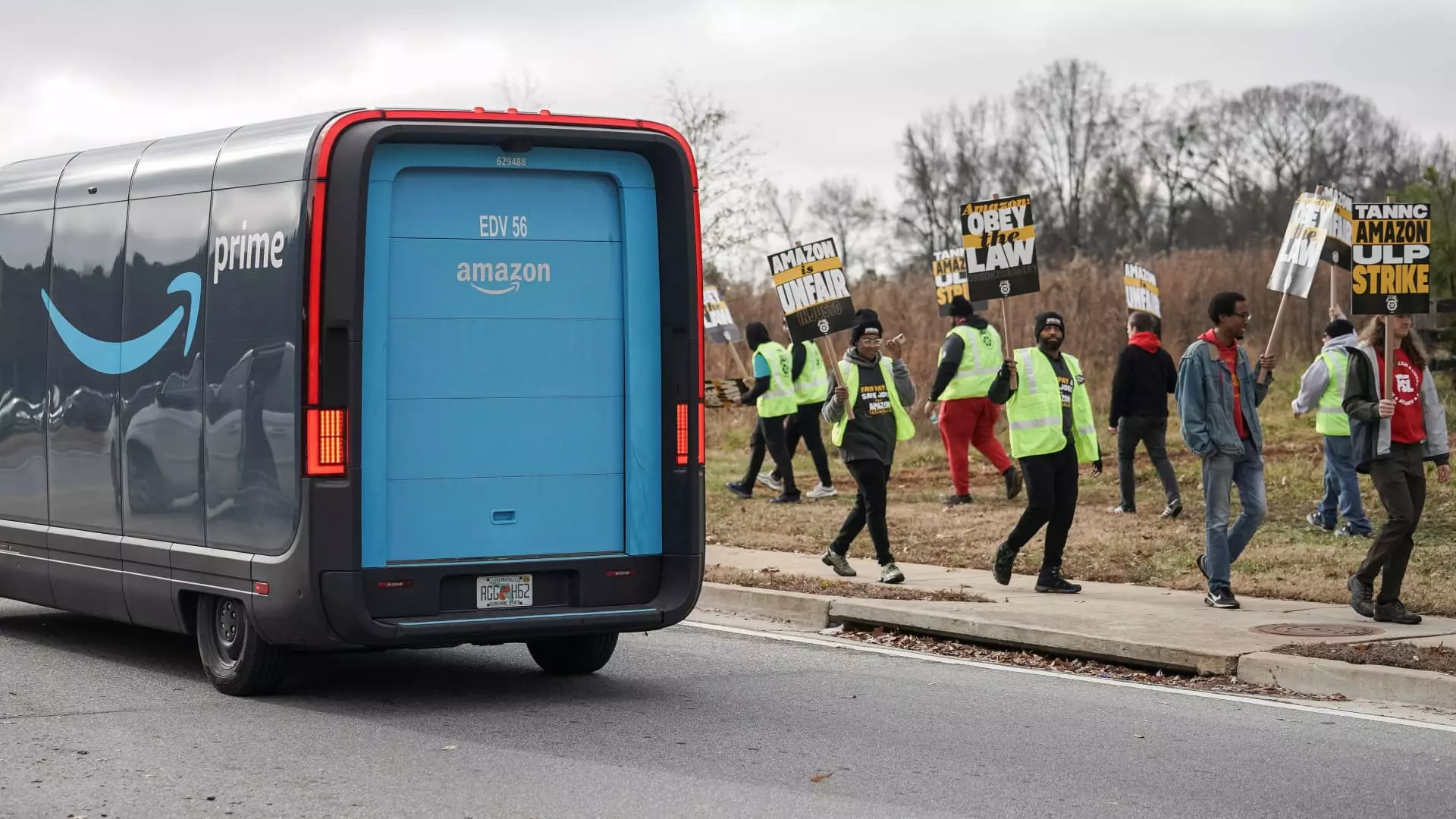On Thursday, workers at seven Amazon facilities across states including New York, Georgia, California, and Illinois took to the streets in a significant labor strike. This collective action, organized by the Teamsters union, aims to address a growing list of grievances including inadequate pay, unsafe working conditions, and insufficient benefits. The timing is particularly pivotal as it coincides with the bustling holiday shopping season, emphasizing the workers’ urgency for Amazon to negotiate and meet their demands.
Teamsters President Sean O’Brien articulated the frustrations of the workers, stating that Amazon’s relentless pursuit of profit is at the expense of its employees’ well-being. The Teamsters viewed this strike not merely as an act of protest, but as a necessary pressure tactic to compel Amazon to participate in meaningful negotiations. The union had set a clear deadline for the company to engage in talks regarding contract terms, which Amazon reportedly ignored, leading to heightened tension and dissatisfaction.
In response to the strike, Amazon issued a statement characterizing the union’s actions as deceptive. The company claimed that the majority of protestors were not actual employees but rather individuals brought in from outside. This assertion raises questions about the true support within the workforce for unionization and complicates the narrative surrounding labor movements in large corporations. Amazon’s focus remains on ensuring that holiday orders are fulfilled, underscoring their insistence on operational continuity despite the labor movement’s demands.
The current unrest within Amazon’s workforce is far from isolated. The company has a long history of resisting unionization, a trend that saw its first significant break in 2022 when warehouse workers in Staten Island voted to unionize. This event marked a pivotal moment in labor relations within Amazon, indicating a shift in employee sentiment towards seeking representation. In a notable development this past June, workers from the Amazon Labor Union, who had initiated the Staten Island movement, voted to join forces with the Teamsters, signaling an evolved approach to collective bargaining.
The scale of this strike is unprecedented, with the Teamsters claiming it is the largest in Amazon’s history in the U.S. This moment shines a spotlight on the broader labor movement that is gaining traction not only at Amazon but across different industries facing similar struggles. As the situation unfolds, the outcome of these negotiations could set significant precedents for future labor relations, influence public perception of corporate practices, and potentially reshape the landscape of workers’ rights in America.
As Amazon navigates the challenges posed by this strike and the ongoing demands from its workforce, it faces a critical juncture. The push from the Teamsters reflects a broader desire for equitable labor practices, better pay, and safer workplace environments. The future of Amazon’s labor relations will depend greatly on its response to these worker-led initiatives. Will the corporate giant choose to engage constructively with its employees, or will it continue to resist the tide of change? Only time will tell, but the momentum behind organized labor is undeniably growing.

